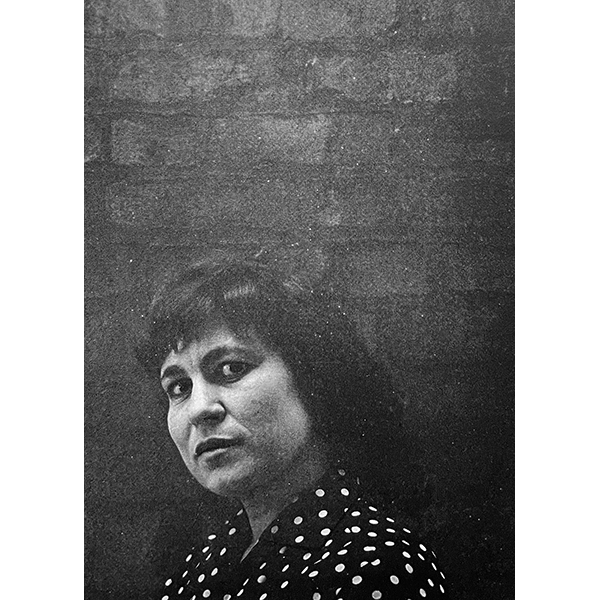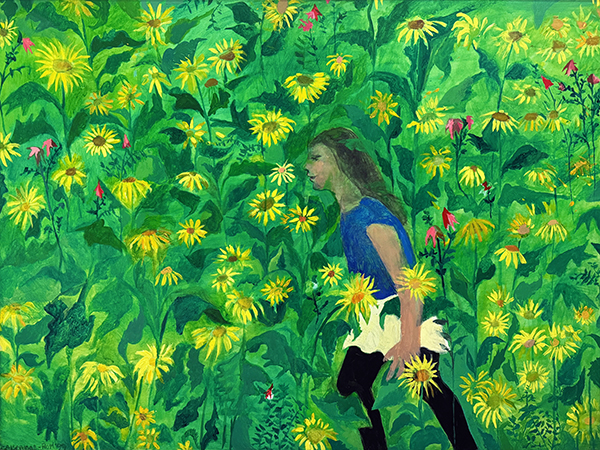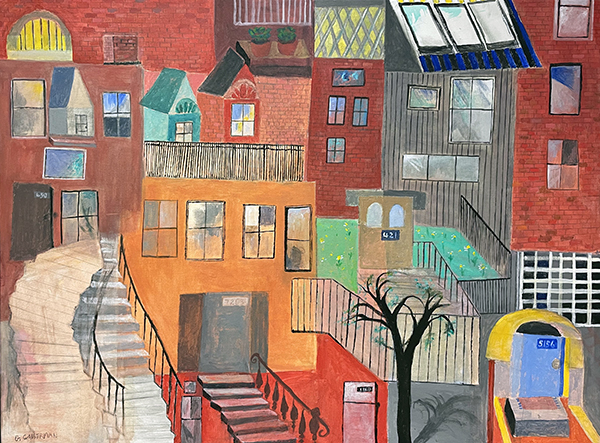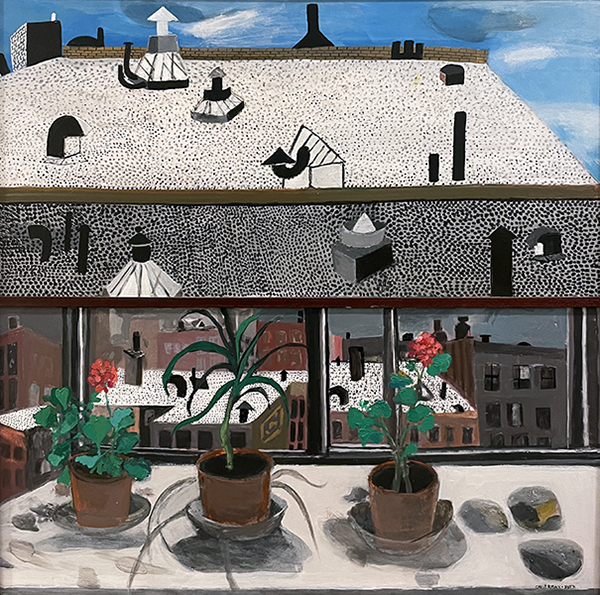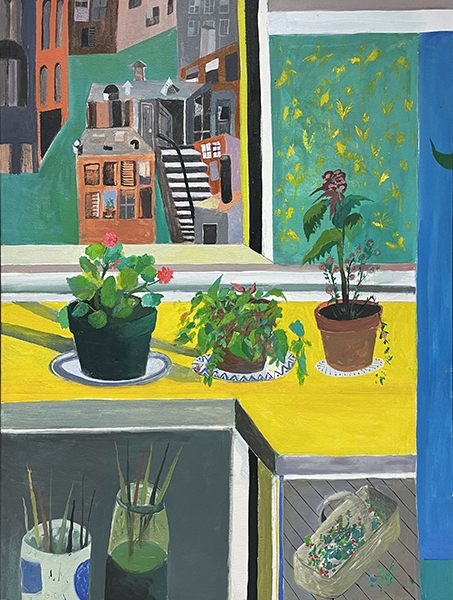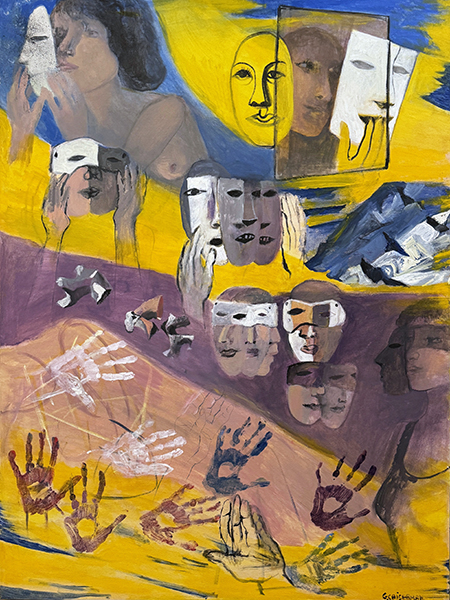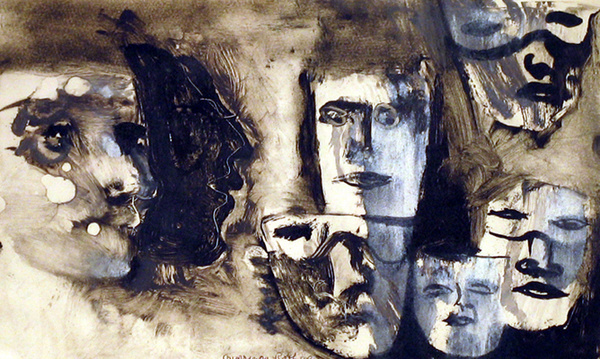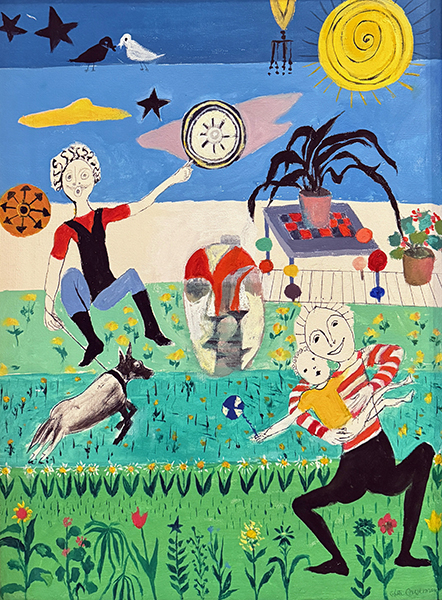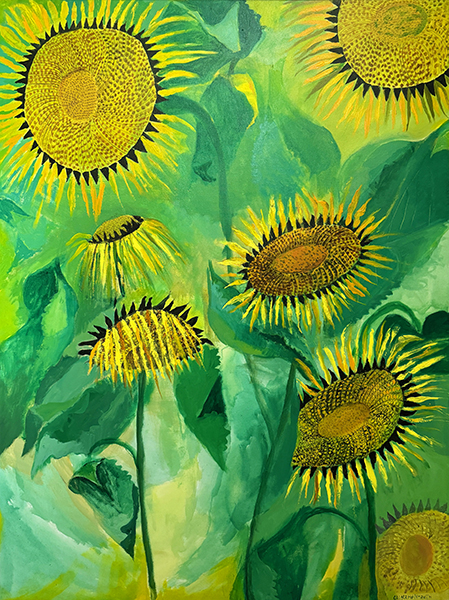Ghitta Caiserman-Roth
(1923-2005) – Artist Biography
Ghitta Caiserman graduated from the Parsons School of Design in New York with a postdoctoral fellowship, having studied with the painter Moses Soyer. In the early 1940s Caiserman was influenced by teacher Harry Sternberg, who encouraged her to use her art to reflect on her experience working in war factories in Montréal, and living in a working-class area of Halifax in 1945. Returning to Montréal in 1947, she and Alfred Pinsky opened the Montréal Artists School with artists Barbara Eckhart and Harold Goodwin. A trip to Mexico in 1948 exposed her to the socialist mural movement, and she began to incorporate more socialist themes in her work.
Caiserman-Roth was part of Jewish Painters of Montreal. The group was an artist collective that depicted expressionistic images of social realism during the 1930s and 1940s. Modern Canadian painting was defined by this generation that drew its inspiration from rise of socialism, the great depression and the effects of war. The painters were heavily influenced by the social effects of fascism and the struggle of the working class. The style was later referred to as Social Realism; a term popularized in the 1980s by art historian Esther Trepanier. Caiserman-Roth was also part of the Young Women's Hebrew Association (YWHA), along with other female artists Rita Briansky and Sylvia Ary and it was from the annual art exhibition of the YWHA and Young Men's Hebrew Association that the Jewish Painters of Montreal group was born.
During the 1950s, she began to focus on interior scenes and still lifes -- the window became a major focus in her work, symbolic at once of freedom and alienation. During the 1970s and 1980s her drawing and painting became increasingly whimsical and abstract through an overlapping and reworking of forms, adding printmaking to her range of media. Among her many awards include the Canadian Centennial Medal; a Canada Council Graduate Scholarship; Canada Council Purchase Awards; several Art Auction Awards; the Best Graphic Image Award from the Ontario Artists Society; Art Gallery of Brandt Purchase Price, Brantford, Ontario; the ninth Annual Fund for the Arts, I.J. Segal Fund; Living Nature Award of the Monsanto Certificate of Merit and Exploration Scholarship (Canada Council for the Arts), 1987.
In 2000, in recognition of her over fifty year career, Ghitta Caiserman was awarded the Governor General's Award in Visual Arts.
Caiserman-Roth's work is held in over 100 private and public collections, including the following:
Air Canada
Alcan Aluminum Ltd.
The Art Bank, Ottawa
Art Gallery of Ontario, Toronto
Bank Leumi, Israel, Montreal
Canada Council for the Arts
Confederation Centre Art Gallery, Charlottetown
Department of External Affairs, Ottawa
O.J. Firestone Collection, Ontario Heritage Foundation
Jewish Public Library (Montreal)
Lethbridge Community College, Alberta
Montreal Museum of Fine Arts
Musée national des beaux-arts du Québec, QC
National Gallery of Canada, Ottawa
Ontario Department of Education
Ottawa City Hall
Pratt & Whitney, Montreal
Rare Book Department, McGill University
University of British Columbia
University of Western Ontario, London, Ontario
Over the course of her long career, Caiserman-Roth won numerous awards:
Canada Council Senior Fellowship (1961)
Several Hadassah Art Auction Awards
The Canadian Centennial Medal (1967)
Canada Council Purchase Awards
Purchase Prize and Best Graphic Image Award Ontario Society of Artists (1975)
Ninth Annual Award for the Arts, I.J. Segal Fund
Living Nature 86 Prize
Canada Council Explorations Grant (1987)
The Governor General's Award (2000)
In addition to her many awards, Caiserman-Roth was also a member of several institutions and councils:
Associate, Royal Canadian Academy of Arts
Conseil des artistes peintres du Québec
Conseil Québecois de l'estampe
Atelier Circulaire
Conseil d'Administration des Amis du Musée d'art contemporain de Montréal
Artistic Technique: Based on her education and influences, Caiserman-Roth established herself as a figurative artist concerned with the human condition and worked through various media: painting, lithography (printmaking), etching, and drawing. She highly valued symbolism and the combination of conventional materials and techniques with unconventional ones. Caiserman-Roth has given various artist's statements to attribute her artistic inspiration from a multitude of broad and personal sources: her perceptions, visual observations, memories, dreams, imagination, and her experimental impulse; politics, psychoanalysis, and family; her techniques, reading, music, and most consistently, nature. She transforms the starting material through synthesis, symbolism, and a fusion of form and theme. She notably said, "My art comes from the 'vocabulary of art.' My personal motto is: 'With shape and a line and some colour I can go far.' I love to play with vocabulary and meaning."
